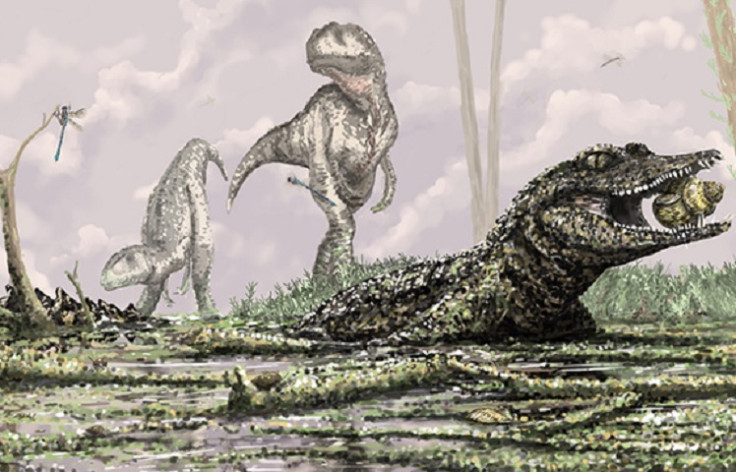Tiny Button-Toothed Crocodile Species From 126 Million Years Ago Discovered on Isle of Wight
A tiny extinct species of crocodile has been discovered on the Isle of Wight after amateur fossil hunters found two pieces of a skull.
The two fragments were found three months apart by two different collectors, yet they fitted together to make a complete skull that turned out to be a completely new species of ancient crocodile.
Named Koumpiodontosuchus aprosdokiti, meaning 'unexpected button toothed crocodile,' the new species was detailed in a paper in the journal Acta Palaeontologica Polonica.
Lead author Steve Sweetman, from the University of Portsmouth, said: "Both parts of this wonderful little skull are in good condition, which is most unusual when you consider that crashing waves usually batter and blunt the edges of fossils like this within days or even hours of them being washed onto the beach.

"Both parts must therefore have been found very soon after they were released from the mud and debris originally laid down on a dinosaur trampled river floodplain around 126 million years ago.
"The sheer serendipity of this discovery is quite bizarre. Finding the two parts is in itself remarkable. That they should be found three months apart by different collectors and taken to the museum where the same members of staff were on duty and therefore able to recall the first specimen defies belief!"
The back half of the skull was found on a beach near Sandown by Diane Trevarthen, who took it to the Dinosaur Isle Museum for analysis.
They initially thought it was a baby of one of the island's well-known Cretaceous crocodiles.

However, when Austin and Finley Nathan turned up three months later with the creature's snout, and that the two parts fitted together, the curators realised they had something very special on their hands.
Explaining his initial analysis, Sweetman said: "I was convinced it was a Bernissartia skull because of its small size – the fully grown animal was only a little over two feet long from nose to tail – but particularly because of its button-shaped teeth which are unique among crocodyliforms. They were used to crush mollusc shells and other invertebrates with tough outer coatings."
On examining the fossil closer, however, he realised it was an entirely new species because of differences in how the bones were arranged: "The position of this was most unexpected. The location of the hole in the mouth, where the airway from the nose opens, was surrounded by bones at the very back of the palate. This tells us that the discovery is not only a new species but also a new genus of ancient croc closely related to, but subtly different to those alive today."
© Copyright IBTimes 2025. All rights reserved.






















